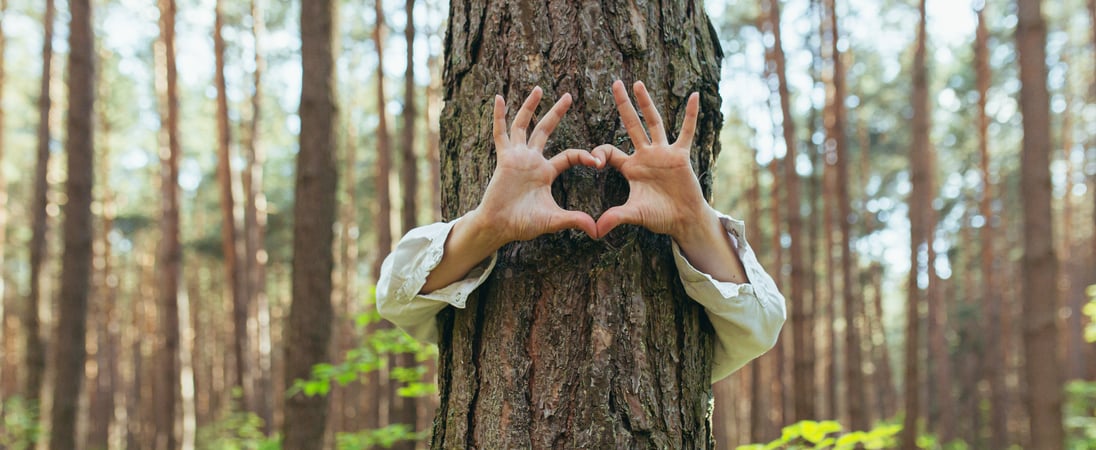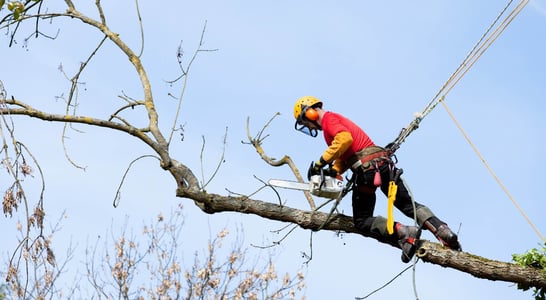
National Love a Tree Day
Did you know that trees provide countless benefits to both nature and people? On National Love a Tree Day, we recognize the invaluable gifts trees offer!
They cool our neighborhoods with their shade, provide homes for wildlife, and purify the air by filtering out pollutants. Plus, their natural beauty brings a sense of peace and well-being to those who take a moment to notice.
How to Celebrate National Love a Tree Day
The celebration may not have the most well-documented beginnings, but its impact remains clear. By dedicating a day to trees, we honor their vital contribution to the world.
Whether it’s planting a new tree, caring for existing ones, or simply spreading awareness, each person can play a role in keeping our planet green.
Plant a New Tree
Celebrate National Love a Tree Day by planting a new tree! With a little digging, anyone can become a tree parent.
Choose a sapling that suits the local climate, find a cozy spot in the yard, and plant it with care. By the end of the day, you’ll have a leafy friend that will grow with you.
Visit a Park
Parks are filled with trees, just waiting for company! Go for a walk, find the oldest tree, and marvel at its towering presence.
Feel the bark and listen to the rustling leaves as they whisper ancient secrets. Whether strolling through a forest or sitting under a tree’s shade, it’s the perfect way to show appreciation.
Host a Tree Trivia Night
Gather friends for a night of fun tree-themed trivia. Test everyone’s knowledge about different species, tree facts, and the best tree puns.
Provide leafy prizes like plants or seeds for the winners, and you’ll have a night that blends education with entertainment. Don’t forget to serve some nutty snacks for an authentic forest feel.
Make Tree Art
Use creative skills to make art that celebrates trees. Paint a serene forest landscape, craft a tree out of paper, or even write a short poem.
The possibilities are endless, and each creation will highlight the natural beauty of trees. Hang your masterpiece where everyone can enjoy a bit of tree love year-round.
Why Celebrate National Love a Tree Day?
This special day is a reminder to appreciate trees and all they do for us. They protect our soil from erosion and help maintain the balance of our ecosystems.
They also play a significant role in battling climate change by absorbing carbon dioxide. The day aims to encourage everyone to see trees as an essential part of a healthy environment and our everyday lives.
National Love a Tree Day serves as a call to action. It nudges us to plant new trees, care for the existing ones, and spread awareness about their importance.
Doing so shows our dedication to nurturing our planet and leaving a greener legacy for future generations.
History of National Love a Tree Day
National Love a Tree Day emerged from a growing appreciation for trees and their importance. While its origins are not tied to a single event or individual, it grew from the broader environmental movement that gained traction in the 20th century.
The day is now part of the larger observance of National Love a Tree Week, which encourages people to reflect on trees’ beauty and benefits. The mid-20th century marked a period when environmental awareness began to rise, leading to the establishment of various environmental observances.
People began to understand trees’ significant role in combating climate change and supporting biodiversity. This understanding and concern over deforestation drove the need for a day to focus on trees. The National Wildlife Federation has been key in helping people to celebrate this important event.
National Love a Tree Day’s creation highlights a growing desire to emphasize sustainability. It aims to inspire individuals and communities to plant more trees and protect existing ones. Such awareness efforts seek to counter the negative impact of urbanization and deforestation. The day was meant to rally people around a cause that deeply impacts our planet.
Although not as old as Arbor Day, which dates back to the 19th century, National Love a Tree Day nonetheless has its roots in similar values. The day grew from the idea that small, positive actions can lead to significant environmental improvements. It brings attention to the everyday choices that can support tree health and growth.
National Love a Tree Day FAQs
Did ancient cultures have special tree-related traditions?
Yes, many did. For instance, the Celts revered the oak tree, believing it held cosmic significance and served as a gateway to other realms.
Similarly, in Norse mythology, Yggdrasil, the immense ash tree, connected the nine worlds, symbolizing the universe’s structure. These traditions highlight the deep-rooted significance of trees in human history.
What’s an unusual way people celebrate National Love a Tree Day?
In some communities, people practice “forest bathing,” a Japanese tradition known as shinrin-yoku.
This involves immersing oneself in the forest atmosphere to enhance well-being.
Participants slowly walk through wooded areas, engaging their senses to connect deeply with nature. It’s a mindful practice gaining popularity worldwide.
Are there any myths about trees that are surprisingly untrue?
A common myth is that Spanish moss harms the trees it drapes over. In reality, Spanish moss is an epiphyte, meaning it lives on the tree but doesn’t take nutrients from it.
It uses the tree merely for support, absorbing moisture and nutrients from the air and rain. Thus, it doesn’t harm the host tree.
Which tree species has the most unusual method of seed dispersal?
The sandbox tree (Hura crepitans), native to tropical regions, has a unique seed dispersal method.
Its seed pods explode with a loud bang, flinging seeds at speeds up to 160 miles per hour. This explosive mechanism ensures seeds spread far from the parent tree, reducing competition.
Is there a tree that can ‘walk’?
The Socratea exorrhiza, known as the walking palm, found in Central and South American rainforests, is rumored to ‘walk’ by growing new roots toward sunlight and letting old ones die.
Over time, this could allow the tree to ‘move’ several centimeters per year. However, scientists debate the validity of this claim.
What’s the significance of the ‘Tree of Life’ in different cultures?
The ‘Tree of Life’ is a universal symbol. In Christianity, it represents eternal life in the Garden of Eden.
In Islam, it’s the tree in paradise whose roots are in heaven and branches reach into the world.
In Buddhism, the Bodhi tree is where Buddha attained enlightenment. These varied interpretations underscore its profound spiritual importance.
How do trees communicate with each other?
Trees use a network known as the “Wood Wide Web,” facilitated by mycorrhizal fungi.
Through this underground system, trees can share nutrients, send distress signals about drought or disease, and even support weaker trees by transferring resources.
This complex communication highlights the cooperative nature of forest ecosystems.
Are there any trees that produce natural toxins as a defense mechanism?
Yes, the manchineel tree (Hippomane mancinella), native to the Caribbean and parts of the Americas, is highly toxic.
Its sap can cause severe skin irritation, and its fruit, known as the “little apple of death,” is poisonous. Even standing under it during rain can lead to blistering, making it one of the world’s most dangerous trees.
What’s the role of trees in urban legends or folklore?
In many cultures, trees feature prominently in folklore. For example, in Japanese mythology, it’s believed that spirits called kodama inhabit trees, and harming such a tree brings misfortune.
Similarly, in Western folklore, tales of haunted forests often involve ghostly apparitions linked to ancient trees, emphasizing their mystical allure.
How do certain trees adapt to survive in fire-prone environments?
Some trees, like the Australian eucalyptus, have adapted to fire-prone environments by developing thick, insulating bark and the ability to resprout quickly after fires.
Their seeds often require the intense heat of a wildfire to germinate, ensuring regeneration in the nutrient-rich ash bed post-fire.
Also on ...
View all holidaysWorld Whisky Day
Mix up a whisky sour, or pour your favorite whisky over some ice and enjoy. Gather some friends together to try out different brands and cocktails.
National Learn To Swim Day
Teach your kids to swim, or sign up for lessons yourself. It’s good for your health, and may save your life or the life of another from drowning someday.
National Mimosa Day
Sip on sunshine in a glass with a bubbly, citrusy Mimosa! Perfect for brunch or any celebration, this delightful drink brings a pop of fun to any gathering. Cheers to good times and good company!
National Barbecue Day
From hot dogs and hamburgers to pineapple and vegetables, there’s something for everyone at a barbecue. Gather your friends and family and get grilling.
We think you may also like...
National Water a Flower Day
Pamper your indoor plants and flowers, and tend to your garden or window pots to make sure all your flowers get a drink on Water a Flower Day.
Arborist Appreciation Day
Show some appreciation to the arborists who put their lives and safety on the line to keep us safe from potentially dangerous trees and branches.
National Public Lands Day
Enhancing community spaces fosters environmental stewardship, promotes civic pride, and creates cleaner, more enjoyable public areas for all.








